Dipping and Diving, Juking and Jiving, Growing Up and Regretting
From the book All the Colors Came Out by Kate Fagan. Copyright © 2021 by Kate Fagan. Reprinted by permission of Little, Brown and Company, New York, N.Y. All rights reserved.
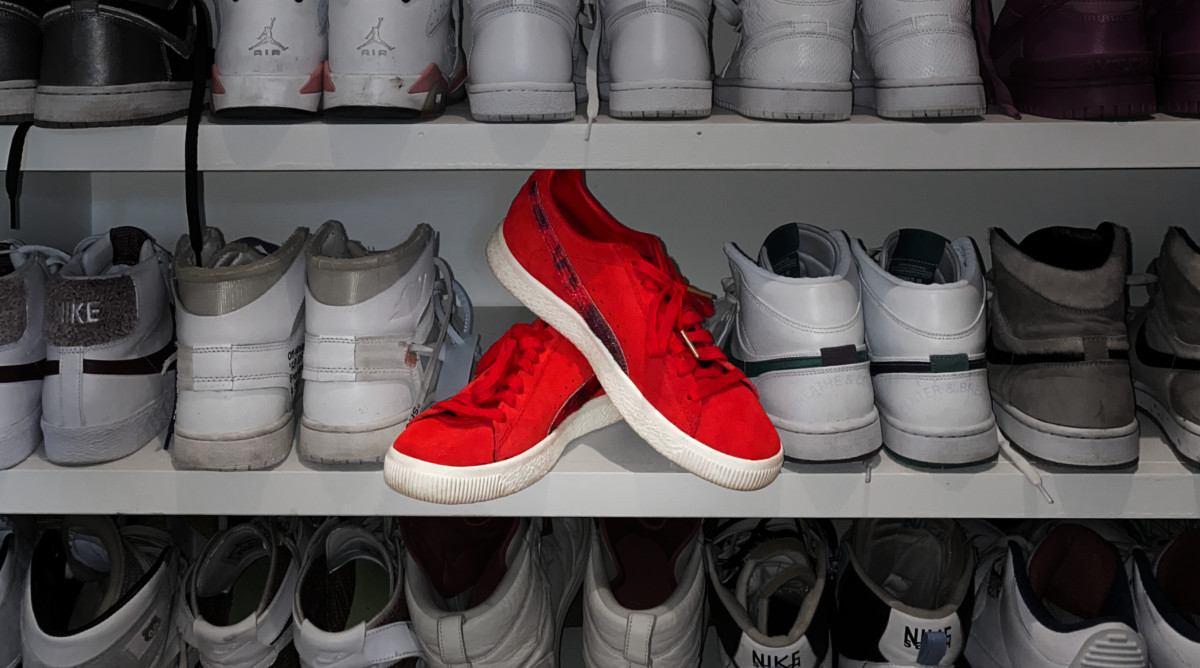
In my closet is a pair of red suede Puma sneakers. They are low-top, the signature shoe of Walter “Clyde” Frazier, who starred for the Knicks in the 1960s and ’70s. When I was growing up in Schenectady, N.Y, in the ’90s, Frazier was the color commentator for the Knicks. His voice became the soundtrack of my youth, and he spoke like he played basketball: smooth, with exciting flourishes. He wore eccentric suits (“When I go to a tailor, I say, ‘Show me something you think nobody would ever wear’ ”) and peppered the broadcasts with Clydisms: dipping and diving, juking and jiving, abounding and astounding.
Since my family watched every game (all 82 in the season) for a string of years, we became accustomed to Frazier’s signature flavor, most of his colloquialisms passing unremarked upon. But at least once a game, my dad, Chris, would be delighted by Frazier—swishing and dishing!—and he’d imitate the announcer, producing as many Clydisms as he could string together without pause until they became increasingly nonsensical: praying and laying, buying and lying, sighing and frying. I’d add in one or two; my older sister, Ryan, would smile. Then we’d keep watching the game.
My dad’s appreciation for Walt Frazier was always curious to me. The two men couldn’t have been more different. My dad avoided flashiness. In his mind, flashiness was desperation, which revealed insecurity. He believed, and said to me many times, that one goal in life should be for me to quietly go about my business and let people realize, on their own, how awesome I am. “Don’t tell them you’re great. Show them,” he would say to me over and over.
Also, my dad hated suits, and he definitely never went to a tailor. His uniform was basketball shorts and a hoodie. Even at work, a family business he ran with his brother, he wore a coat and tie only on days he had meetings with clients. At 6' 5", his physique drew enough attention, and he was content to duck his head and slip into the back of places.
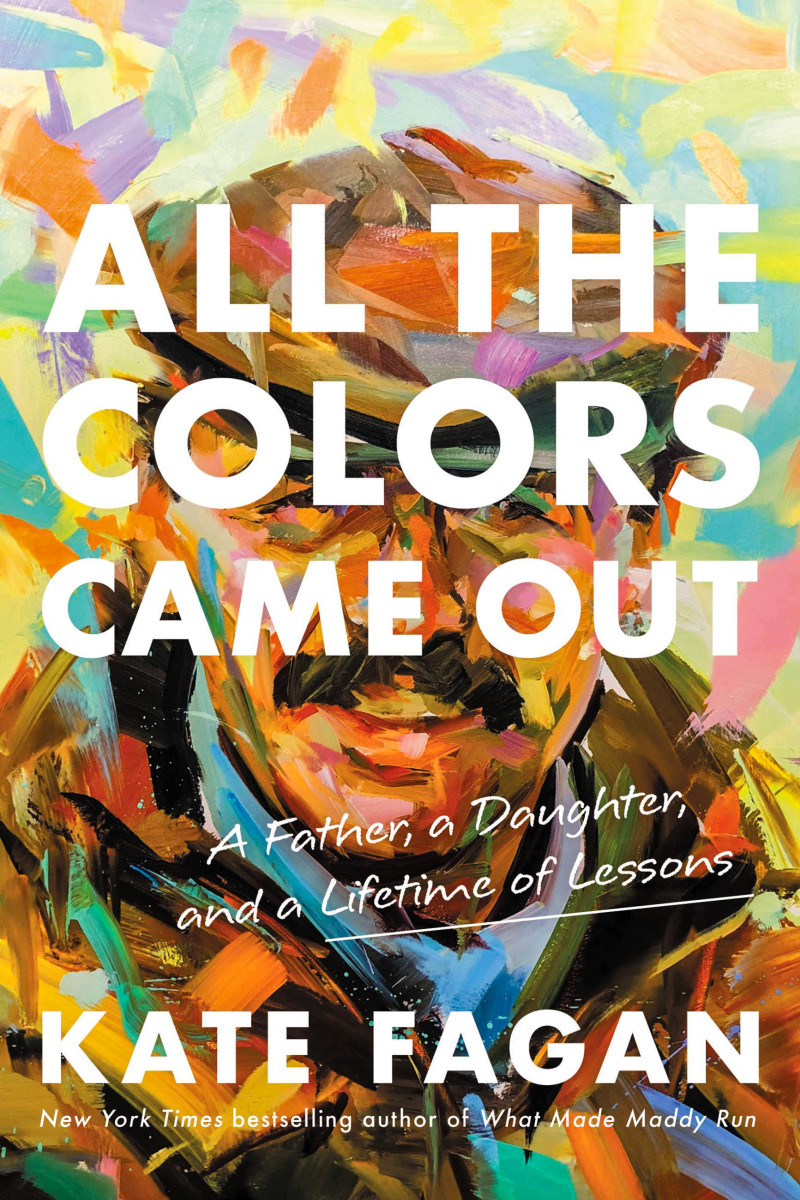
Preorder All the Colors Came Out: A Father, a Daughter, and a Lifetime of Lessons
But he loved Frazier. The guy had “put his money where his mouth is”—another thing my dad loved to say about people he admired. Walt Frazier had won an NBA title; he’d done the work. In that way, my dad’s love for Frazier made sense. He respected passion, people who went all out. With them, he felt a kinship.
The red suede Pumas that now sit in my closet arrived at my doorstep about three years ago. I was surprised. I wasn’t expecting a package, but I also knew what it was right away, because sneaker boxes have a distinct shape. When I opened it and recognized the Puma logo, I thought, Dad. I mostly wore Nikes, and the only person (other than me) who would buy me kicks was my dad.
After I graduated from college, he started a yearly tradition: I was to select what I believed were the coolest sneakers on the market and buy a pair in his size 13. He’d give me his credit card info, and in exchange for my “fashion sense,” he’d tell me to buy myself a pair, too.
Somehow, he framed this ritual as me doing him a favor, and not the other way around. He was good at that. For example, upon leaving a restaurant: “Thanks for letting me buy you dinner, Katie.”
As I got older, I started to notice that sometimes he’d call upon our sneaker custom to bridge a gap between us—if he sensed I was pulling away, or too busy for him, or if he just missed me and wanted to pretend I was a kid again. I’d be trying to get off the phone, anxious to get back to my life, and he’d throw out the lifeline: “Hey, I was thinking, why don’t you find us some sneakers?”
I hated, even as I let it happen, how once I started making more money and a free pair of sneakers didn’t move the needle like it used to, I would forget he had asked me to find us—always us—a pair. A couple of weeks later, he would check in about the sneakers, and I could almost hear him wondering whether I would ever need him again, not just for sneakers but for anything.
The norm was my sending him a pair. But that day three years ago, he broke protocol. He’d come across a sneaker he thought was cool, one that also represented a bond we shared—Walt Frazier—so he’d bought us each a pair. I lifted the lid and parted the white wrapping paper, pulled one sneaker out of the box, held it in front of me, turned it front to side.
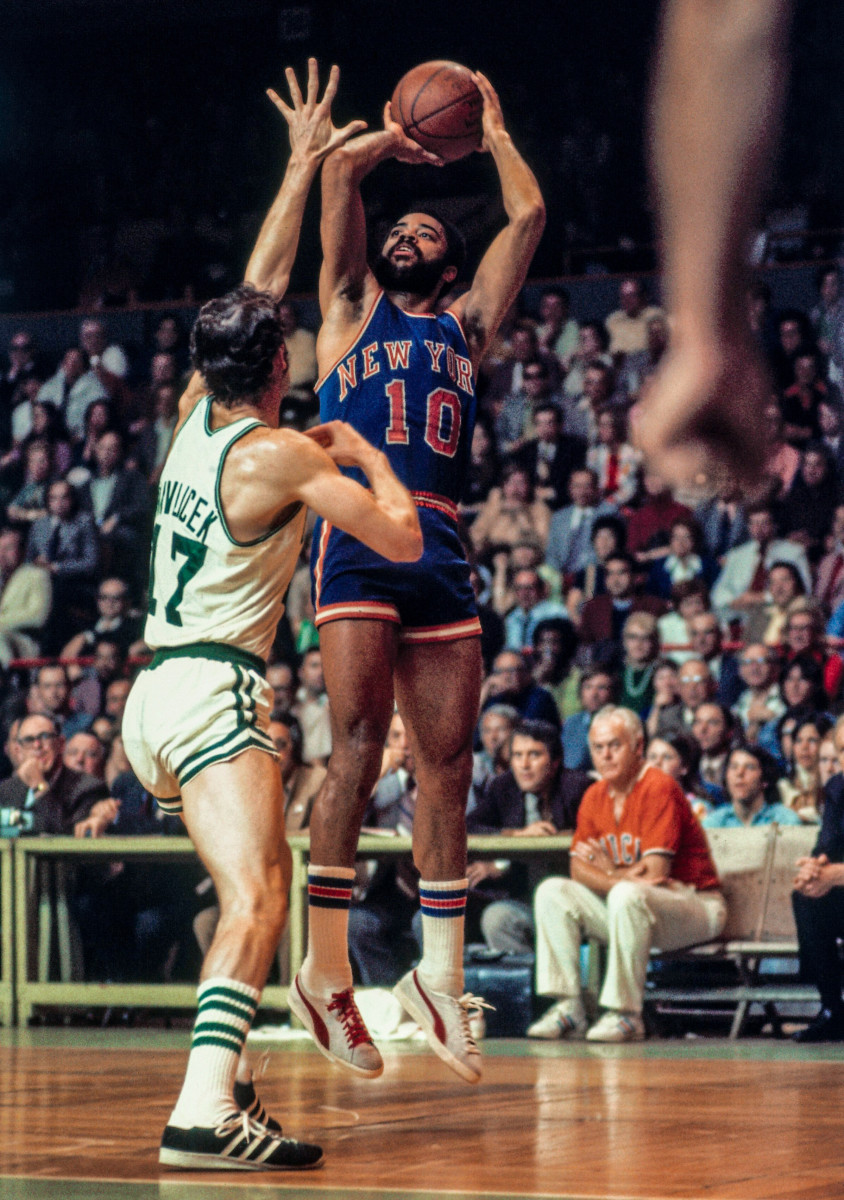
I hated them. Ugh. Goddamn it. I tucked them back into the box, called to thank my dad, and put them in my closet. About five or six months later, when I was up visiting my parents and wearing sneakers that weren’t our red Pumas, my dad said, “You don’t wear the ones I got us, do you?”
“What? Yes—of course. I mean—I do. I love them!”
Each time I looked in the closet for a pair of sneakers, I’d consider the red Pumas. A civil war would break out in my mind:
Me: You’re going to regret not wearing them.
Also me: But I don’t like them very much.
Me: Stop hurting Dad’s feelings; shouldn’t nostalgia and love outweigh fashion?
Also me: Yes, of course they should, and maybe next time they will.
Later, when I knew my dad was going to die, and even afterward, those sneakers became my kryptonite. When I opened my closet, my head would explode with thoughts like little land mines, detonating across my mind. He just wanted to keep sharing things with you: boom. He just wanted to feel needed by you: boom, boom. How could you miss out on that moment, seeing his eyes light up when he noticed what sneakers you were wearing? Boom, boom, boom.
The last week of his life, I wore them every day to the hospital. But between steps, I’d look down and think that it was too little, too late. I’d made my decision, set my priorities.
I don’t think my dad cared about the sneakers. But that’s not how this works. The sneakers had come to symbolize our story, almost like how the icon on a desktop computer is just the representation, the interface, for the complicated program it launches.
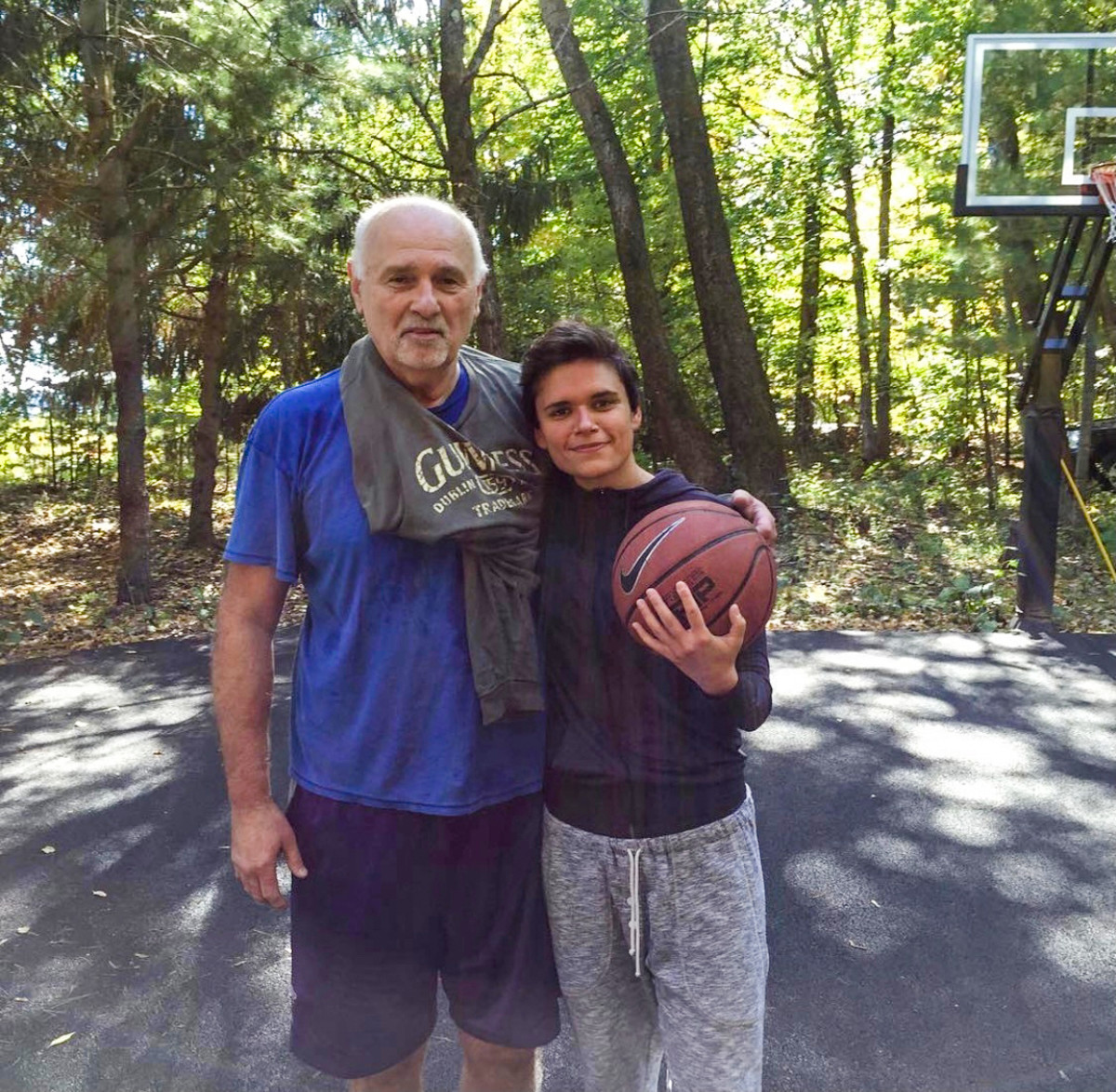
The sneakers represented so much of what we’d built our relationship upon: his sharing his love of basketball, teaching me the game, imparting wisdom and sharing low fives, sweating and smiling together. And my failure to wear them represented the darker side of that connection: that I’d disappointed him by not loving the game as much as he did; by being gay; and that our shared stubbornness, the belief we each possessed that our ideas were always superior, had driven a wedge between us, starting when I chose a college across the country.
When I later told my wife, Kathryn, she said, “Oh, I have something like that. When I was little, all I wanted was a Care Bear stuffed animal. My grandma heard that I wanted one, and so she decided to make one for me—handmade. And when she presented me with the toy, I told her that I didn’t want the one she made, I wanted her to buy me one from the store.”
About a year after the red Pumas arrived, when my dad was still alive, my mom and I were out for a walk and I explained my feelings about the sneakers. She said, “When you and your sister were young, my parents built you a dollhouse by hand, down to even painting the small figurines inside the rooms. I know they wanted to connect with you girls because we had moved away, and they felt they weren’t seeing you as much, and they wanted to do something special. They were so excited to give it to us, but they didn’t know you and your sister were interested in other things, and so that dollhouse was almost never played with.”
These stories didn’t make the red Pumas any less radioactive. They just made me realize that most people have their pair of sneakers, or handmade Care Bear, or dollhouse—an item that has come to represent, for them, a complicated relationship dynamic.
I still see these sneakers every day, on the second shelf of my closet. And every morning my chest tightens, and I usually reach out and touch the soft suede along the heel. But I never wear them. The thought of wearing them haunts me. It’s not that I want to keep them pristine; it’s that I don’t want them reminding me, all day long, of the ways in which I failed at living up to the promise of our relationship.
From the book All the Colors Came Out by Kate Fagan. Copyright © 2021 by Kate Fagan. Reprinted by permission of Little, Brown and Company, New York, N.Y. All rights reserved.
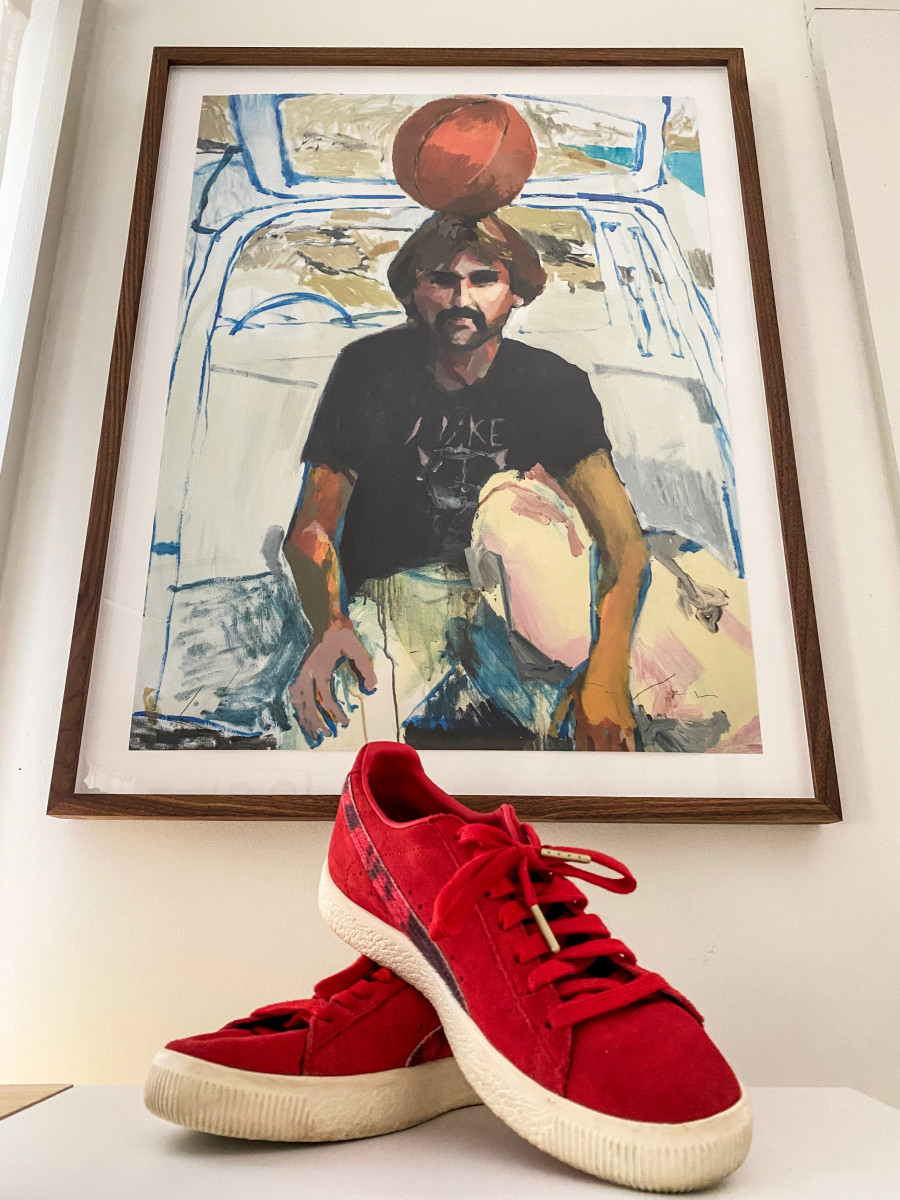
More book excerpts:
• The Bitter Lows and Medicinal Highs of the Hockey Dad
• The Amazin' True Story of Piazza, Clemens and the Broken Bat
• A Crappy Boat Ride, a Record Catch and a Fly-Fishing Frenzy
